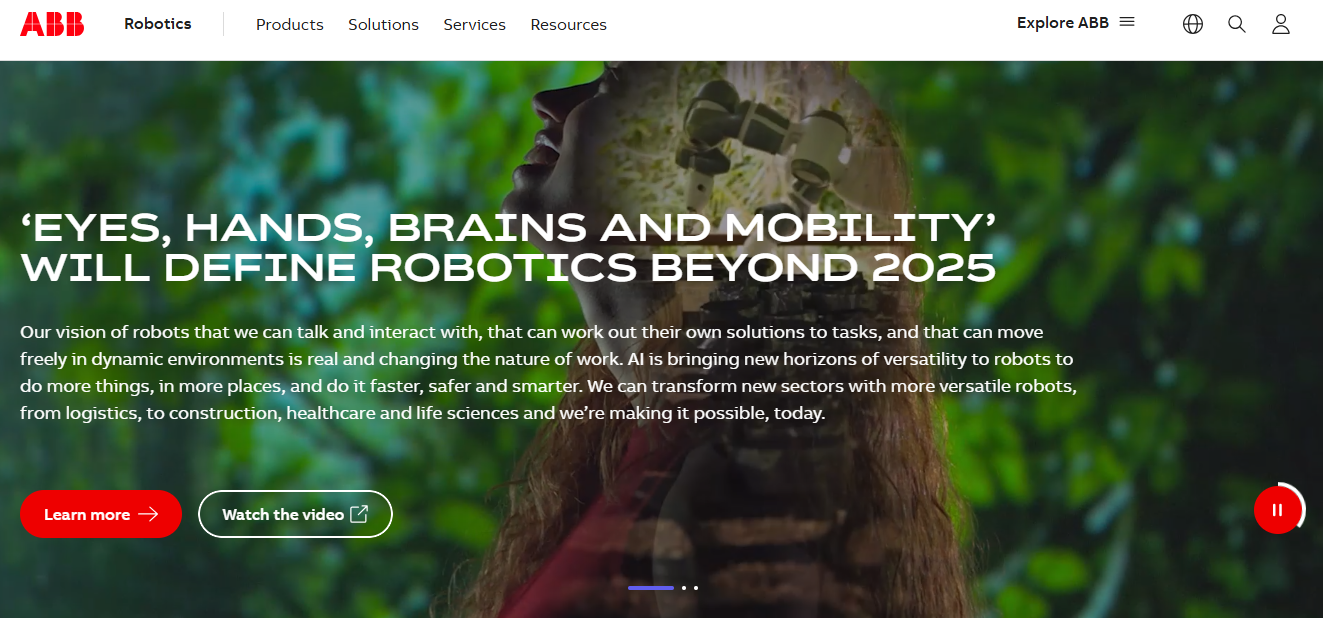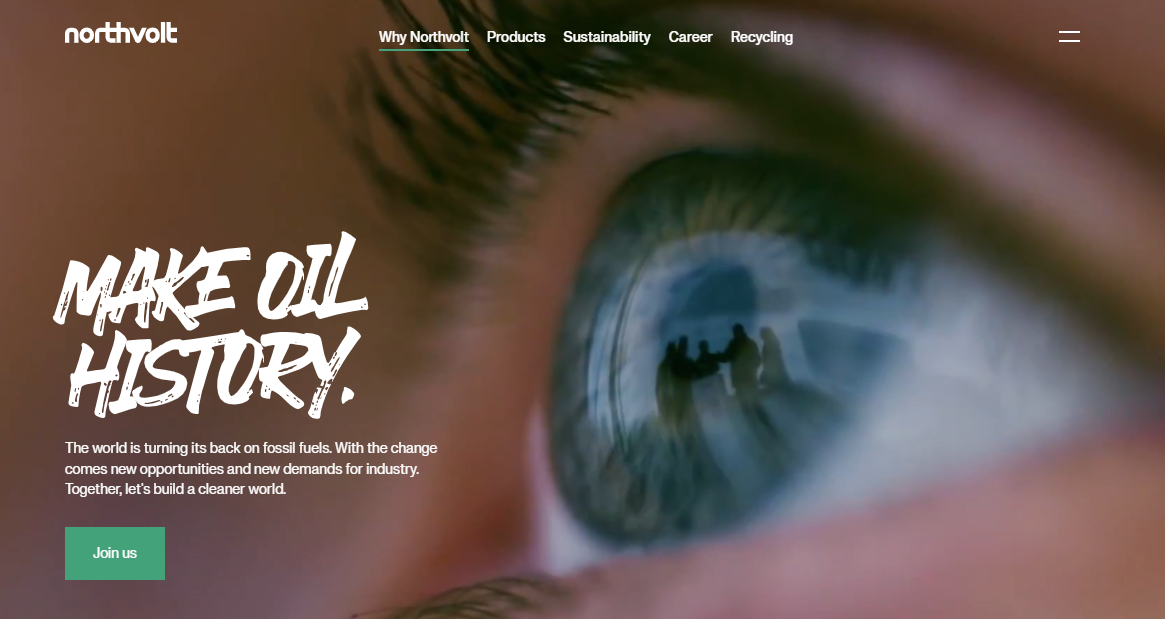You’ve likely spent years perfecting your manufacturing process. Yet your manufacturing web may still be turning away prospects in under 2 seconds. According to web-design data, users form a lasting opinion about a site in just 0.05 seconds, and 94% of those judgments are based purely on design.
For industrial B2B companies, this isn’t just about aesthetics; it’s about credibility, conversion, and keeping pace with competitors who speed up and simplify their websites. If your site feels static or dated, you’re not behind; you’re leaking revenue.
Below are the 10 best manufacturing website designs of 2025: industry-leading examples that get messaging, visuals and visitor flow right. Swipe their high-performance patterns. Then use them to raise the standard for your next site revision.
Key Takeaways:
- The best manufacturing web designs in 2025 focus on clarity, trust, and conversion, not flashy visuals.
- Modern visitors expect proof-driven experiences, certifications, case studies, facility visuals, and real results upfront.
- High-performing manufacturing sites guide buyers with structured navigation, industry pages, and strong RFQ journeys.
- Product visuals and process transparency beat generic stock photos; buyers want to see machines, workflows, and real capability.
- Sites that win prioritize speed, mobile UX, and straightforward CTAs, making it easy to request quotes or book calls.
- Differentiation is essential; standout positioning and messaging separate leaders from look-alike industrial competitors.
- Manufacturers investing in modern design, sharp messaging, and trust signals are converting more buyers, faster.
What High-Converting Manufacturing Websites Get Right in 2025
According to recent data, manufacturing and industrial B2B sites average only around 2.1 % visitor-to-lead conversion. Put differently: if 10,000 people visit your site in a month, only ~210 become leads. That’s a huge potential loss of revenue, and it starts with what your site gets wrong.
High-performing manufacturing websites in 2025 borrow winning playbooks from SaaS conversion design: clarity, trust, guided UX, and frictionless actions.
Here’s what they get right:
1) Clear, Value-First Messaging
Great manufacturing sites don't make visitors decode value; they state it upfront. Instead of leading with capabilities or machinery lists, they instantly communicate outcomes and impact.
- They lead with outcomes: e.g., “Cut unplanned downtime by 30%” instead of “Advanced CNC machining.”
- They skip jargon walls; decision-makers care about uptime, cost efficiency, defect reduction.
- Bad → Better example:
- ❌ “ISO 9001 certified CNC machining solutions.”
- ✅ “Reduce scrap by 40% with ISO-9001 certified CNC machining you can rely on.”
- The hero answers “What’s in it for me?” within five seconds.
2) Proof Up Front
Industrial buyers behave like SaaS enterprise evaluators; they want evidence, not promises. Top manufacturing sites place trust signals above the fold:
- Certifications, industry standards, and sector experience above the fold
- Logos + case stats instead of generic claims
- Short, decisive proof like “Trusted by Tier-1 OEMs in aerospace & robotics”
- Case wins or ROI snapshots near the hero and CTAs
3) Modern UI + Product-Focused Visuals
Just like SaaS, clutter ≠ credibility. Industrial buyers expect clean, confident, premium UX that signals modern capability.
- Real production images > stock factory photos
- Clean typography, modern grid, intentional white space
- Product demos, 3D visuals, component close-ups
- Motion only where it clarifies, not distracts
4) Buyer-Ready Navigation
Manufacturing buying journeys mirror SaaS enterprise flows, different personas, different paths. Good manufacturing sites guide by need:
- Engineer → Specs / tolerances / materials
- Procurement → RFQ / lead times / pricing
- Ops leaders → QC systems / certifications / capacity
- Plus, sticky RFQ/Quote CTA like SaaS uses Book Demo.
5) RFQ & Conversion UX That Reduces Friction
Winning sites treat RFQ like a sales experience, not a paperwork exercise. They reduce time-to-quote and simplify information capture.
- Short forms + guided steps instead of long checklists
- Micro-CTAs: “Request tolerance sheet,” “Upload CAD for review,” “Get pricing estimate”
- Live chat or guided RFQ flows for support
- Configurators or calculators for self-serve quoting
Also Read: B2B UX Design: Best Practices and Tips
6) Fast, Responsive & Built for Technical Buyers
Engineers and buyers browse at on-the-go, trade shows, production floors, and meetings. High-performing sites stay fast, functional, and clean everywhere.
- <3-second load, compressed assets, minimal clutter
- Smooth tablet + mobile experience (not an afterthought)
- Scannable layouts, visible specs, immediate value
7) Trust Stack Architecture
Manufacturing deals are high-risk, high-value decisions. Trust can't be a single badge; it needs to be layered throughout the journey.
- ISO / AS / ITAR / industry compliance badge
- Case studies with measurable operational impact
- Client reviews, partner badges, safety certifications
- Proof placed near CTAs to reduce hesitation
Below are the best-in-class manufacturing web designs of 2025. Steal their structure. Study how they communicate capability. And benchmark your redesign against them.
10 Best Manufacturing Web Designs of 2025
When buyers evaluate manufacturing partners today, they don’t start with a sales call; they start with your website. And in 2025, the best manufacturing brands aren’t relying on brochures in browser form factors anymore. They’re building conversion-driven, credibility-first digital experiences that feel as advanced as the products they deliver.
Let’s break down the 10 best manufacturing web designs of 2025, and what they get right.
1. Protolabs.com

Protolabs sets the benchmark for clean, high-accuracy manufacturing interfaces. In 2025, manufacturing websites are moving away from overly busy layouts and sterile corporate templates.
Industrial minimalism isn’t “simple”, it's disciplined. Every element serves a functional purpose, reducing noise and emphasizing capability, accuracy, and trust.
What this design looks like
- Crisp layouts with deliberate spacing and hierarchy
- Monochrome or neutral palettes with strategic accent color
- Technical sans-serif typography reminiscent of CAD interfaces
- Precision-cut shapes, gridded layouts, vector lines, and modular UI blocks
- Subtle motion used only for clarity, not decoration
Why it works for manufacturers
- Communicates engineering accuracy and quality control
- Reduces cognitive load and decision fatigue for industrial buyers
- Makes complex capabilities easier to digest quickly
- Signals modernity and operational excellence
Ideal for
High-precision manufacturers, CNC machining, additive manufacturing, aerospace components, micro-fabrication, med-tech production, and any brand selling high-accuracy processes.
2. ABB Robotics

ABB’s site captures what robotics-led manufacturing feels like: futuristic, animated, and command-centre-styled. This design style instantly communicates that your operations aren’t traditional, they’re automated, scalable, and built on cutting-edge systems.
What this design looks like
- Dark-mode themes with neon or electric accent colors
- Micro-interactions inspired by machine dashboards + robotics UIs
- Abstract motion backgrounds inspired by circuitry / automation flow
- Futuristic typography with bold contrast + tight kerning
- 3D visualizations, product renders, and motion-driven UI moments
Why it works for manufacturers
- Signals innovation, automation, and software-led production
- Creates emotional tech superiority vs. legacy manufacturers
- Helps buyers visualize advanced robotics workflows
- Reinforces your capability as a future-proof production partner
Ideal for
Robotics, industrial automation, smart factories, machine vision, AI-driven tooling, autonomous systems, and precision mechatronics.
3. Siemens Digital Industries

Siemens wins by designing for engineers first, not marketers. Its blueprint-style structure and CAD-like clarity says one thing: “We speak manufacturing engineering.”
Manufacturers serving engineers don’t win with pretty. They win with clarity, technical rigor, and proof.
What this design looks like
- Blueprint-style UI accents + grid overlays
- CAD renders, exploded views, technical diagrams
- Specs-first layouts with sortable data blocks
- Precision-ready typography + high contrast UI
- Hover reveals to expose tolerances, machining paths, tolerances, QC steps
Why it works
- Communicates scale + ability to meet enterprise complexity
- Instills trust through proof, compliance, and structure
- Helps you stand apart as a strategic partner, not a vendor
Ideal for
Tier-1 OEM suppliers, aerospace, defense, med-tech, automotive manufacturing, large industrial conglomerates.
4. Caterpillar

Caterpillar leans into grit, scale, and machinery-in-motion. Real plant footage replaces generic stock, proof, not polish. Some manufacturers win by showing the real grind, the torque, the sparks, the steel, the people on the floor.
What this design looks like
- High-contrast film-style industrial photography
- Dark metals, grit textures, rugged realism
- Video banners showing machines + operators in action
- Dynamic scrolling over plant scenes + tooling sequences
Why it works
- Builds credibility and trust through real operations
- Shows scale, equipment investment, and skilled labor
- Differentiates from sterile “corporate stock photo” competitors
Ideal for
Heavy machinery, CNC shops, metal fabrication, construction equipment, industrial assembly, forging, welding.
5. Northvolt 0

Northvolt’s site nails the clean-tech manufacturing aesthetic: light, transparent, ethical, futuristic. The design doesn’t yell power; it signals innovation, environmental discipline, and modern materials science. This aesthetic says: “We are the future of responsible production.”
What this design looks like
- Light backgrounds + soft gradients + glassmorphism accents
- Organic curves, green-blue palettes, airflow-type animations
- Nature-inspired motion + science-clean layouts
- Sustainability scorecards, lifecycle diagrams, compliance call-outs
Why it works
- Conveys innovation + environmental responsibility
- Aligns with modern procurement priorities (ESG, traceability)
- Appeals to investors + next-gen buyers
Ideal for
Battery tech, EV manufacturing, solar/wind hardware, carbon capture, sustainable materials, green industrial robotics.
6. GE Vernova

GE’s design tells high-stake enterprise buyers they’re safe: global, compliant, scalable, battle-tested. Global manufacturing players go bold, secure, and enterprise-tier. It says one thing clearly: “We are proven, scalable, and built for global supply reliability.”
What this design looks like
- Large typography, generous white space, premium restraint
- Strategy-led messaging + Fortune-500 style photography
- Global footprint map + facility network visualization
- Executive tone, credibility bars, compliance certificates
Why it works
- Communicates scale + ability to meet enterprise complexity
- Instills trust through proof, compliance, and structure
- Helps you stand apart as a strategic partner — not a vendor
Ideal for
Tier-1 OEM suppliers, aerospace, defense, med-tech, automotive manufacturing, large industrial conglomerates.
7. Festo

Festo’s design proves simplicity can feel premium in manufacturing. Some manufacturers don’t need heavy visuals or dramatic storytelling; their advantage is precision, engineering purity, and world-class product craftsmanship. It quietly says, “We don’t need noise — our product detail and performance speak louder than any headline.”
What this design looks like
- Ultra-clean white or monochrome layouts
- Precision line icons + technical grid spacing
- Soft micro-interactions (hover highlights, modular blocks)
- No clutter, restrained content hierarchy + premium whitespace
- Macro product photography + crisp product angles
Why it works
- Evokes precision manufacturing + high-tolerance QC
- Helps focus buyer attention on product capability + detail
- Creates “premium industrial” brand perception
- Easy to scale across catalogs, SKUs, and technical modules
Ideal for
High-precision components, sensors, micro-manufacturing, advanced materials, optics, aerospace parts, electronics manufacturing, med-tech components.
8. Tesla Manufacturing Tour UX

Tesla doesn’t describe its process; it walks you through it. Scroll = experience, not text. This removes doubt and proves capability step-by-step. For buyers evaluating partners, this design removes uncertainty and answers the biggest hidden objection:
“Do they actually know how to execute at scale?”
What this design looks like
- Scroll-triggered animations mapping manufacturing flow
- Phase-based storytelling (Design → Prototype → Production → QA → Delivery)
- Transparent timelines + tooling stages
- Dynamic illustrations + animated diagrams
- Real operator + machinery video cut-ins
Why it works
- Helps non-technical buyers understand complex manufacturing
- Builds trust through transparency + operational maturity
- Turns your process into a competitive differentiator
Ideal for
OEMs, contract manufacturing, aerospace, EV, med-tech, precision engineering, specialty materials.
9. Rockwell Automation

Rockwell blends manufacturing + software in one interface. Data isn't hidden, it’s visualized as part of the design. These websites look like digital twins of the factory environment, blending UI dashboards, real-time data elements, and connected manufacturing visuals.
It signals one thing instantly:
“We don’t just make parts — we run a smart, automated, measurable factory.”
What this design looks like
- Interface-inspired blocks (dashboards, analytics, machine uptime data)
- Live-style metrics: cycle times, OEE, energy usage, traceability markers
- Smart-factory visual diagrams + IoT network overlays
- Neutral palettes + neon accents (industrial meets software)
Why it works
- Shows maturity in automation + traceability
- Appeals to CTOs, COOs, and procurement teams who require proof of process
- Clearly differentiates from manual or traditional operations
Ideal for
Smart factories, robotics-integrated plants, IIoT manufacturers, aerospace suppliers, semiconductor and electronics manufacturing.
10. Harley-Davidson Manufacturing

Harley connects legacy with modern manufacturing, honoring decades of build quality while showing modern precision. Not all manufacturing is futuristic; some brands win because they’ve been building for decades, even generations.
What this design looks like
- Heritage color palettes (navy, brass, steel, earth tones)
- Serif typography mixed with industrial sans-serif
- Archival visuals, “since 19XX” storytelling
- Historical-meets-modern visuals, old plant photos beside today’s automation
- White-glove product photography + “craft detail” macro shots
Why it works
- Creates emotional credibility through longevity
- Great for traditional industries upgrading their digital presence
- Helps stand out in markets where trust + stability matter
Ideal for
Machining shops, steel fabricators, family-owned industrial firms, legacy OEM suppliers, industrial craftsmen, equipment rebuilders.
When you’re ready to turn your manufacturing website into a high-trust, conversion-driven sales asset, Beetle Beetle is the partner that builds sites engineered to win.
How Beetle Beetle Builds Manufacturing Websites That Win Business
A modern manufacturing website isn’t a digital brochure; it’s the first factory tour, the first RFQ touchpoint, the first proof of capability. At Beetle Beetle, we build manufacturing websites that turn technical expertise into commercial momentum.
Our process is engineered for industrial buyers, long sales cycles, and high-value projects. Here’s how we do it:
- Start With Commercial Clarity
Before design, we align on your core value drivers, precision, reliability, lead times, certifications, supply scale, and engineering depth, so your site communicates a competitive advantage fast.
- Engineer a Buyer-Ready Flow
Manufacturing buyers need answers, not marketing slogans. We build pages and pathways that direct them to what matters most: capabilities, processes, industries served, and proof of delivery.
- Showcase Technical Credibility
We surface the signals industrial buyers look for: standards, tolerances, automation capabilities, facility scale, materials, QC processes, and tooling expertise, without overwhelm.
- Turn Proof Into Confidence
Case studies, facility photos, certifications, machine lists, and before-and-after visuals are structured to build trust in under 30 seconds. Your expertise becomes tangible, not assumed.
- Remove Friction From RFQs
We streamline your quoting experience with high-intent CTAs, RFQ forms that qualify without friction, and clear next-step pathways, speeding up the sales cycle.
- Design for Speed, Scale & Reliability
We build fast, secure, Webflow-powered sites that perform for every stakeholder, procurement, engineering, founders, and buyers, across devices and global markets.
- Built for Real-World Sales Cycles
Industrial decisions aren't impulsive; they’re researched, rational, and risk-driven. Every page is crafted to support that journey, eliminate doubt, and accelerate confidence.
Let’s turn your website into an asset your sales team points to with pride, and one your competitors wish they had.
Ready to see what your website can really do? Book your intro call today and let’s build a site that speaks, converts, and sells.
FAQs
1. Do manufacturing web designs need industry-specific jargon?
Not necessarily — great manufacturing web content uses clear language first, layering in technical terms only where they help buyers evaluate capabilities.
2. Should a manufacturing web design showcase the production floor or machinery?
Yes — high-quality facility visuals build trust, and the best manufacturing web experiences use real factory footage and equipment photos to prove operational scale and precision.
3. Does a manufacturing web design need interactive features?
Not always, but modern manufacturing web UI benefits from interactive process diagrams, capability filters, and RFQ calculators that help buyers move faster.
4. How often should a manufacturing web be updated?
Every 6–12 months, the most competitive teams refresh their manufacturing web presence regularly to reflect new certifications, automation investments, and client wins.
5. Should pricing ever be listed on a manufacturing web design?
If possible, yes — transparent cost ranges or “starting from” tables help qualified prospects move forward, and manufacturing web users appreciate clarity in cost expectations.
































